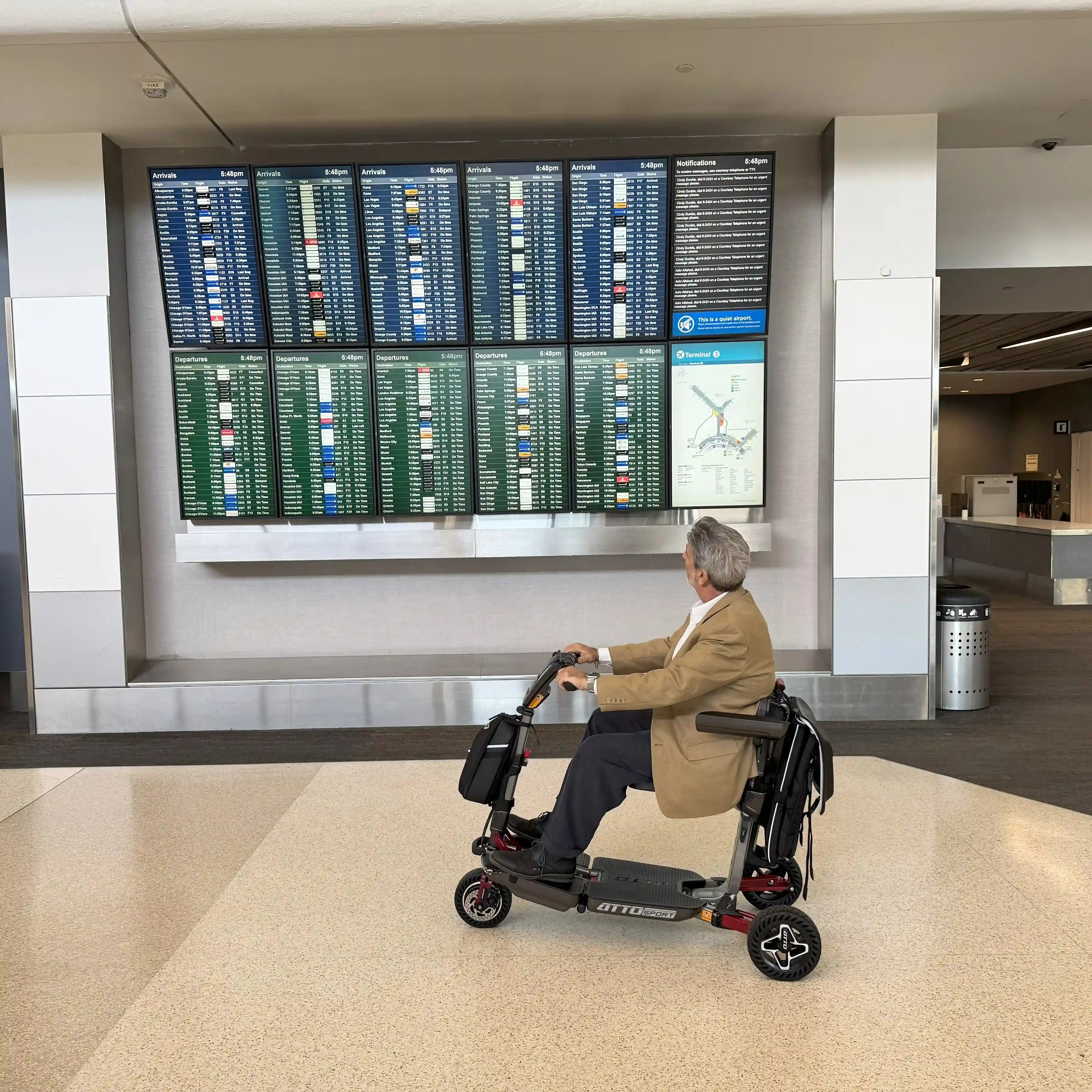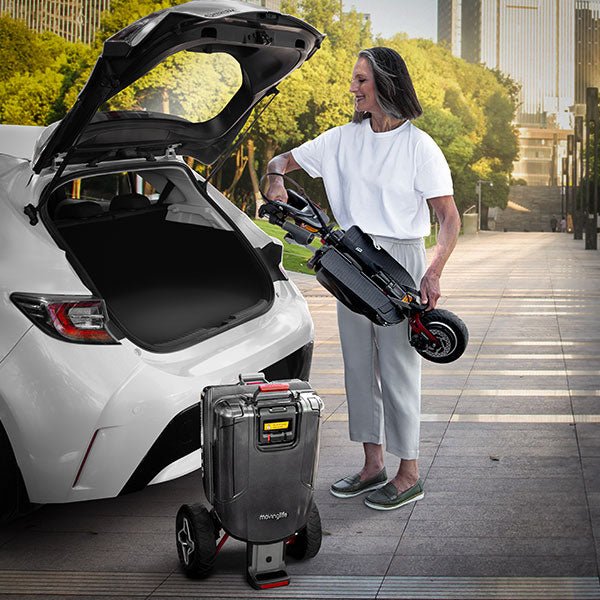The Complete Guide to Cruising with a Mobility Scooter

Taking a cruise is a wonderful way to see the world while enjoying the comfort and luxury of a floating hotel. If you use a mobility scooter, there’s even better news: cruise lines have made significant strides in accessibility, and bringing your scooter onboard is easier than ever. With thoughtful planning and a few helpful tips, you can navigate the ship, explore new destinations, and fully enjoy your vacation with confidence and ease.
In this guide, we’ll walk you through everything you need to know about cruising with a mobility scooter, from booking and embarkation to shore excursions and navigating the ship. Whether you’re a first-time cruiser or a seasoned traveler, this article will help you prepare for a smooth and stress-free journey.
Planning Ahead: The Key to a Great Cruise
The most important part of cruising with a mobility scooter happens before you even step on the ship. Planning ahead ensures your cruise will be safe, comfortable, and enjoyable.
Inform the Cruise Line
Contact your cruise line’s accessibility or special needs department as early as possible. Let them know you’ll be bringing a scooter and ask about their specific policies. Each cruise line has its own set of rules regarding scooter size, storage, and use. Giving advance notice ensures they can make any necessary arrangements.
Book the Right Stateroom
Most cruise lines require that scooters be stored inside your cabin and not in the hallways. Standard cabin doors are often narrow, around 22–26 inches wide, so it’s important to check your scooter’s dimensions. If it won’t fit, consider booking an accessible stateroom. These rooms offer wider doorways, more floor space, and accessible bathrooms, features that make all the difference for comfort and convenience.
If you’re bringing a compact scooter like the ATTO, space concerns are less of an issue. The ATTO folds up in seconds and can be easily wheeled behind you in trolley mode, just like rolling a small suitcase. Its folded form fits conveniently into a closet, corner, or under a desk, making it ideal for staterooms with limited space.
Know Your Scooter's Specs
You may be asked to provide your scooter’s dimensions, weight, and battery type. Cruise ships typically allow scooters with sealed, non-spillable batteries, such as gel-cell or lithium. Be sure your charger is compatible with the ship’s power outlets, which are usually 110V for North American ships or 220V on some European vessels. It’s a good idea to bring a power adapter or converter, just in case.
Bring the Essentials
Don’t forget your charger, keys, and any accessories you use regularly. Consider packing a small power strip, without surge protection, to increase your charging options inside the cabin. You may also want to bring a spare battery if your scooter supports it.
If your personal scooter is bulky or not designed for travel, a compact model like the ATTO can simplify your cruise experience. Since it folds in seconds and rolls behind you, it’s not only great for shipboard life but also perfect for tight airport gates, elevators, and shore excursions.
Embarkation and Disembarkation
Getting on and off the ship may seem daunting with a scooter, but the process is generally well-organized and accessible.
Embarking the Ship
When you arrive at the port, you’ll go through a security check and check-in process similar to all passengers. You can typically ride your scooter right up to the gangway. Depending on the port and tide, the ramp may be steep, but port staff are usually available to assist.

If you have a folding scooter like the ATTO, you can fold it up at the terminal entrance and wheel it in trolley mode through security or onto the gangway if the incline is steep. This not only makes maneuvering easier but also reassures staff that your scooter won’t pose any accessibility obstacles.
Muster Drill
Shortly after boarding, all passengers must attend a safety drill. You can bring your scooter with you to the muster station, and accommodations are made to ensure guests with mobility needs can participate.
Disembarking
When it’s time to leave the ship, the process is much like boarding. Crew will help guide scooters off the ship. If the gangway is steep or tricky, you can walk off while a staff member assists with your scooter, or, with the ATTO folded and wheeled behind you, manage the descent with even greater ease.

Getting Around Onboard
Modern cruise ships are designed with accessibility in mind, and mobility scooter users can generally enjoy all areas of the ship with ease.
Elevators and Public Spaces
Cruise ships have multiple elevators on every deck, most of which are large enough to accommodate a scooter. During busy times, like before dinner or after a show, there may be some waiting, so give yourself extra time and be patient.
Public areas, including theaters, lounges, casinos, and restaurants, are usually accessible. Some venues have designated areas for scooters, while in others, you can park nearby and transfer to a seat.
If you’re using the ATTO, its ability to quickly fold means you can store it neatly beside your seat in a restaurant or by your chair in the theater, eliminating the need to leave it in a hallway or outside the venue.
Dining Areas
In buffet areas, you can use your scooter to move through the line, though balancing a tray while driving can be tricky. Staff are usually happy to help you carry your food to a table. In main dining rooms, your scooter can be parked nearby while you enjoy your meal.
Because the ATTO is compact and foldable, it can even be placed discreetly beside your dining table, reducing the need to find a separate parking space and ensuring it’s always within reach.
Pool Decks and Outdoor Areas
Scooters are allowed on outdoor decks, though space may be limited in crowded areas. Pool decks can get busy on sea days, and it’s wise to avoid peak times if you want to move around comfortably. Some cruise lines offer pool lifts and accessible sunbathing areas.
Always turn off your scooter and engage the brakes when parked on open decks, especially while the ship is in motion.
Storing and Charging Your Scooter
Store your scooter in your stateroom when not in use, keeping hallways and emergency exits clear. Charge it overnight in your cabin using your own charger and power strip. Never leave your scooter charging in public areas or corridors, as this can be a safety hazard.
The ATTO’s compact form makes it especially easy to store even in smaller staterooms. Folded up, it can fit under the desk, in the closet, or at the foot of the bed, so you won’t have to sacrifice precious floor space.
Shore Excursions and Port Days
Exploring new destinations is one of the best parts of a cruise. With a mobility scooter, you can often go ashore and enjoy your time in port, with a few considerations.

Tender vs. Docked Ports
Ships either dock at a pier or anchor offshore and use small tender boats to ferry passengers. At docked ports, getting off the ship with a scooter is usually simple. However, if the port is a tender stop, taking a scooter ashore may not be allowed due to safety or space limitations.
This is another area where a folding scooter like the ATTO shines. Its small footprint and ability to convert to trolley mode means it can often be accommodated on tender boats where larger scooters would not be permitted. When folded, it’s treated more like a piece of carry-on luggage than a mobility device, increasing your chances of being allowed to bring it along.
Terrain and Accessibility
Once ashore, be mindful of terrain. Some ports have cobblestones, steep hills, or uneven sidewalks. Go slowly, and consider skipping excursions that aren’t rated as accessible.

Excursion Planning
When booking excursions, look for those labeled accessible or with low physical activity. If the excursion includes a bus, ensure it has a wheelchair lift or enough space to store your scooter. Alternatively, some travelers choose to explore the port independently, sticking to the area near the pier.
The ATTO’s portability makes it ideal for excursions with mixed terrain or limited transport options. If you need to board a bus, train, or even a small boat, you can simply fold it and wheel it on board without special handling or storage.
What to Expect from Major Cruise Lines
Most major cruise lines, including Royal Caribbean, Carnival, Norwegian, Celebrity, and Princess, welcome mobility scooters onboard but require that:
-
The scooter fits through your stateroom door, usually 22 to 26 inches wide,
-
It uses a sealed battery,
-
It can be stored and charged in your cabin.
With a travel-friendly model like the ATTO, you’ll meet these requirements with ease. The ATTO folds up to the size of a small suitcase, meets airline and cruise line battery standards, and is designed specifically for tight, travel-based environments.
Final Thoughts
Cruising with a mobility scooter can be a liberating and joyful experience. With thoughtful preparation, you can enjoy all the amenities and activities of the ship while maintaining your comfort and independence.
Choosing a compact and flexible mobility scooter like the ATTO only adds to that comfort. Its foldability, lightweight design, and trolley mode allow you to move through ports, tender boats, crowded lounges, or ship corridors with ease, and to store it out of the way when not in use.
Whether you're relaxing by the pool, catching a show in the theater, or exploring a beautiful new destination, your scooter can help you make the most of every moment at sea.
Bon voyage!
- Tags: ATTO Scooter Travel




